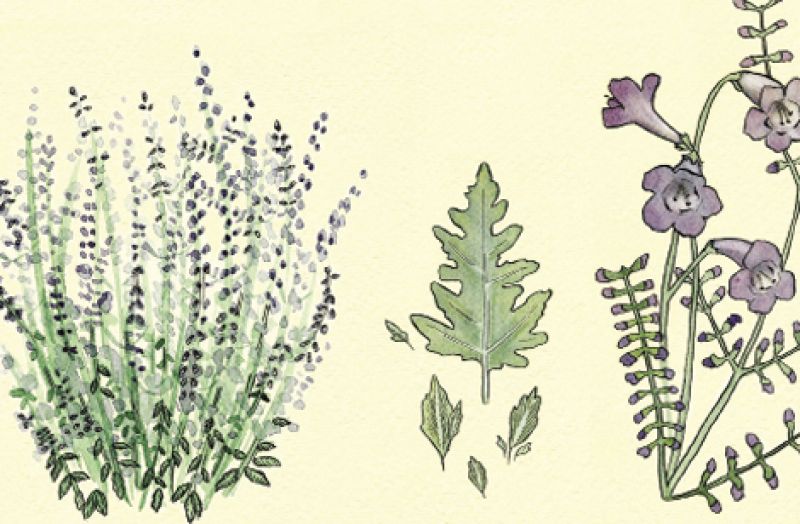
If Mike Myers’ old SNL character Linda Richman had a green thumb, surely Russian sage would have made a cameo in her “Coffee Talk” show: “Russian sage is neither Russian, nor sage—discuss!” Turns out this hardy, ebullient plant heralds from Afghanistan, Pakistan, and Tibet and was merely named (in the mid-1800s) for Russian diplomat B.A. Perovski. And nope, it’s not a member of the salvia (sage) family, though it does have a similar herbal scent. Trivia matters aside, Russian sage is an ideal resident for any sun-drenched Lowcountry garden with good drainage and room for a romantic perennial that—get this—deer and rabbits don’t care to eat, and other pests also avoid.
At a Glance
Common name: Russian sage
Type: Deciduous perennial
Zones: 5-9
Size: 2-5 feet tall;
3 feet around
Exposure: Full sun
Water needs: Drought resistant Drainage: Needs good to
excellent drainage
Soil: Salt- and high pH-tolerant
Blooms: Late spring through fall
Propagation: Self-seeding, also transplants fairly easily
Uses: Excellent border plant
Helpful Hints
START from seed and allow one to four months to grow. Otherwise, opt for larger potted plants, as they take to a new garden easier than smaller specimens.
DOTE on the plant with extra TLC to get it going, but back off a little once it sets.
WAIT for the plant to mature, as it will be less floppy.
DEADHEAD spent flowers to encourage a second blooming. PRUNE eight to 10 inches tall in early spring.
TRANSPLANT well-rooted runners.